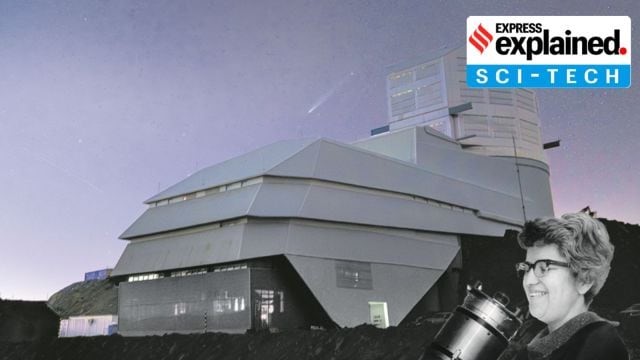Vera C. Rubin Observatory

- 11 Jul 2025
In News:
The Vera C. Rubin Observatory in Chile has unveiled its first stunning images, highlighting the capabilities of its 3,200-megapixel digital camera — the most powerful ever constructed.
Location and Background:
- Situated 8,684 feet above sea level on Cerro Pachón mountain, Chilean Andes.
- Named after Vera C. Rubin, the astronomer who first provided evidence for dark matter in the 1970s.
- Joint initiative of the U.S. Department of Energy (DOE) and the National Science Foundation (NSF).
Objective:
The observatory aims to conduct an unprecedented 10-year survey of the southern sky, addressing critical questions like:
- Structure and formation of the Milky Way
- Existence of Planet 9
- Detection of potentially hazardous asteroids
- Nature of dark matter and dark energy
Key Features:
1. Simonyi Survey Telescope
A state-of-the-art telescope, unique for:
a) Wide Field of View:
- Captures an area equivalent to 40 full Moons in a single shot.
- Utilizes a three-mirror design:
- Primary Mirror: 8.4 m
- Secondary Mirror: 3.5 m
- Tertiary Mirror: 5 m (part of primary)
- Enables scanning of the entire visible sky every three nights.
b) Largest Digital Camera in the World:
- Size: Comparable to a small car
- Weight: 2,800 kg
- Resolution: 3,200 megapixels
- Sensor sensitivity: Detects objects 100 million times dimmer than visible to the naked eye
- Has six optical filters to capture various wavelengths (e.g., UV for hot stars, IR for distant galaxies)
c) Fastest Slewing Capability:
- Adjusts from one celestial target to another in just five seconds
- Enables up to 1,000 images per night
Scientific Potential and Impact
- Will collect 20 terabytes of data every night, generating nearly 10 million alerts per night for any detected changes in the sky.
- Already identified 2,104 new asteroids, including 7 near-Earth objects, using only 10 hours of preliminary data.
- Expected to catalogue:
- 5 million+ asteroids
- 100,000 near-Earth objects
- More than double the total known asteroids within a year of full operation
- Facilitates a high-resolution map of the universe’s structure—vital to understand the distribution of dark matter and dark energy, which together constitute 95% of the universe.
